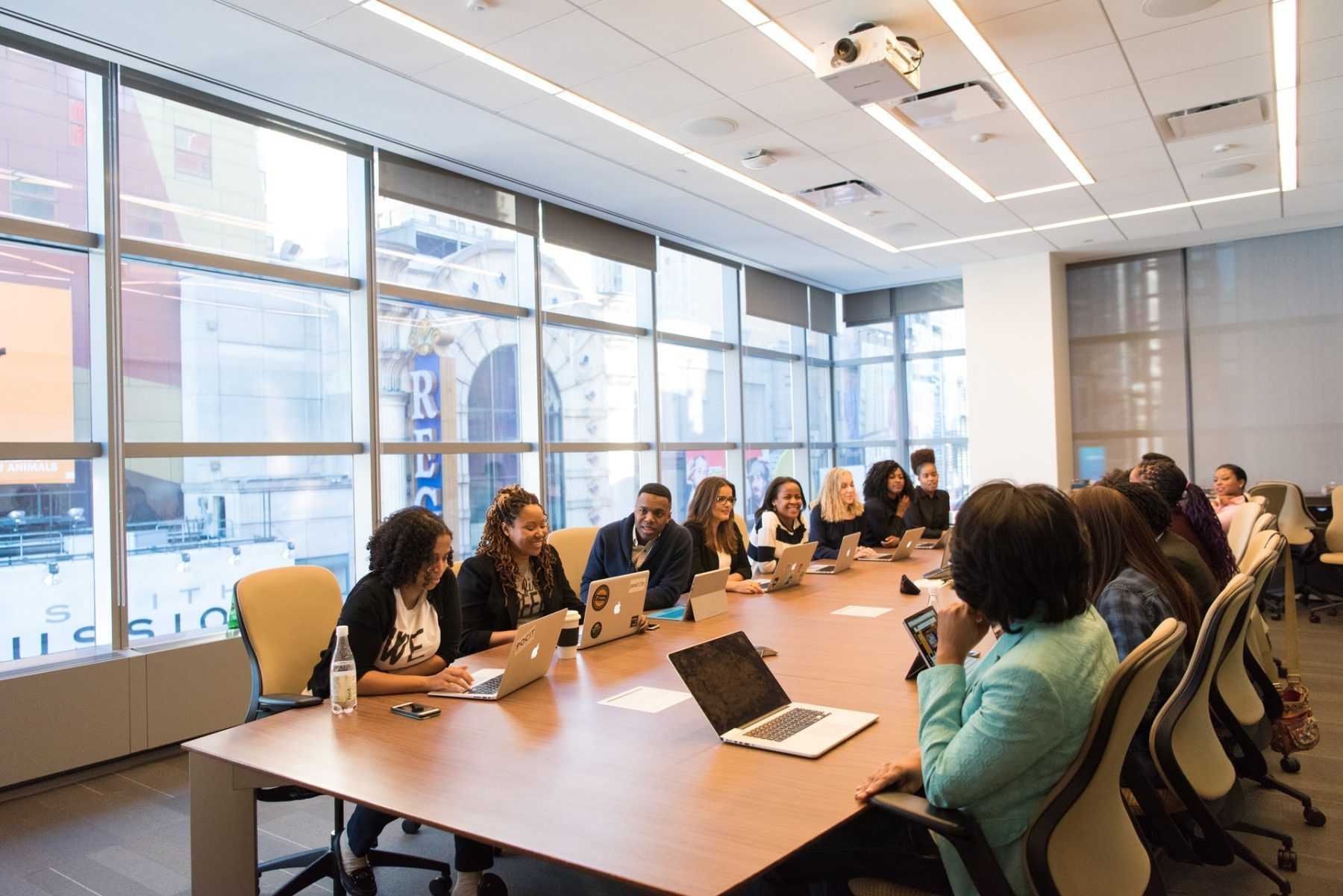The Black Lives Matter movement has not only forced individuals to confront their privilege and biases; it has also prompted a new kind of accountability for multimillion-dollar companies. As people learn more about systemic racism and hone in on the business practices of their favorite brands, companies are learning the hard way that sympathy and verbal solidarity are no longer enough to satisfy a nation that is waking up to its issues of social justice.
Shortly after the deaths of Ahmaud Arbery, Breonna Taylor and George Floyd, many brands (from Amazon to Adidas) temporarily suspended their normal marketing with the #MutedAndListening hashtag and issued public statements to avoid accusations of complacency.
What they didn’t see coming was the outpouring of criticism from consumers who were too familiar with their brands to accept those statements.
Accountability took many forms. Previous employees began to respond with comments about the racism and discrimination they experienced while working at those companies. Other thoughtful consumers looked into companies’ histories and current demographics to see whether they placed a value on BIPOC voices. The results weren’t pretty.
Soon, thousands of social media users were calling brands out for performative activism, forcing them to confront their past mistreatment of Black people and people of color. “Unreal that you treat black women the way you do and then have the NERVE to act as if you are standing in solidarity,” said one comment on Reformation’s BLM response. “Meaningless if they don’t back it up with action. Talk is cheap,” said another on Nike’s.
Companies’ responses were unlike anything we’ve seen before.
The CEO of CrossFit resigned after he received backlash for dropping an insensitive tweet and for saying in a Zoom meeting that he wasn’t mourning George Floyd’s death. The editor of Refinery29 stepped down after receiving numerous complaints about discrimination in the workplace. So did Audrey Gelman, co-founder of NYC women’s social club The Wing, and Leandra Cohen of Man Repeller. These companies, along with Bon Appétit, Reddit and many more, have seen major executives give their positions to people of color after BIPOC have called them out on social media for their unfair business practices and lack of diversity.
Clearly, social media users’ outrage at these unearthed atrocities has sparked a new standard of brand accountability. In order for a brand to say that “Black Lives Matter,” it needs to honor that value in its business practices. Consumers are no longer satisfied with the occasional Black cover feature or marketing campaign; they’re demanding specific measures of fairness and inclusivity at every level of operations.
Although they’ve moved Black people into leadership positions amongst their primarily white peers, companies still have a choice to make. Will they implement long-term practices to diversify their workplaces and be more inclusive to people of color? Or will they simply attempt to ride out the social media frenzy and return to normal once the hashtags stop trending?
As much as they long for systemic reform, many Black influencers have expressed skepticism. “It’s a reckoning that’s long overdue,” wrote BuzzFeed reporter Tomi Obaro. “But we have been here before. There have been discussions — countless discussions — about the predominance of whiteness in book publishing, in the corporate world, in film and TV for literal decades.”
The conversations sounded good but never translated into lasting action. “Each time corporate leadership, middle management, and the heads of power offer the same refrain: an ‘all right, we’ll do better’ that results in temporary change before a return back to stasis,” said Obaro.
Others point out the distinction between a single hire and fair business practices in the rest of the company. “It’s great PR to say you’ve made this major hire but what has actually changed?” asked a Black advertising executive. After decades of half-hearted endorsements and promises, the Black and BIPOC communities know better than to get their hopes up after one or two Instagram posts.
Taking action to promote equality in the workplace is no new concept to the corporate community. Education and training on diversity and inclusion have existed since the 1990s, and businesses have come to recognize the benefits in more recent years. Studies have shown that racially diverse companies perform better financially and have greater innovation revenues, while teams of different races and experiential backgrounds are able to capture more of the market.
However, as is becoming painfully obvious now, many businesses saw diversity and inclusion as more akin to cute accessories to implement than urgent amendments to an oppressive system. Black representation in higher-level business positions is still woefully disproportionate; Black people represent less than 1% of Fortune 500 CEOs, and only 3.2% of executives and senior manager-level employees are African American. There are also disproportionately few Black lawyers, legislators, educational administrators, nonprofit leaders and entrepreneurs. The numbers show that the corporate world is still not built for all people; it’s especially difficult for BIPOC to break into and excel in careers where other privileged majorities never have to think twice about success.
So, in this new age of accountability, how can consumers start knowing which companies are being true to their word and actually working to become more diverse and inclusive? Look for these concrete practices to distinguish performative allyship from transformative action.
One Black Executive Isn’t Enough
Just putting a Black executive on the leadership team is far from adequate. To only promote one Black individual onto an otherwise all-white leadership team without also rooting out favoritism in hiring and promotional practices or implementing race theory training is essentially to place the enormous burden of company-wide reform upon one individual — and maybe the other Black employees, if there are any. This isn’t much of an improvement: Black employees saddled with the emotional labor of educating up and down the line are set up for burnout.
Demographics: Who Works There?
The truth about how many diverse communities are represented across a company’s employee base is in the numbers. Social media campaigns, like the #PullUpOrShutUp Instagram campaign, demand that major beauty companies reveal the exact demographics of how many people of color, especially Black people, are employed at their company and how many are in leadership.
“If you run an agency, whether it’s five people or 500 people, at least 5% of your organization should be black — 13% of the U.S. population is black — if that’s not the case, you need to first fix that,” said one Black advertising executive. “Then, ask the people of color in your organization what to do and do what that person says.”
But simply changing recruitment practices is not enough. Travis Montaque, a Black tech CEO, explains that simply bringing on more BIPOC through diverse hiring initiatives without addressing the prejudices that come with living in America can actually inspire condescension and resentment toward those employees. “Black people never want to be seen as a charity case or a diversity requirement,” he said. “No one does.” Truly pursuing a diverse, all-inclusive environment requires time, ongoing conversations and unlearning individual biases.
Cultivating a Conducive Environment
According to Montaque, the final goal of every diversity and inclusion initiative permeates as deep as the company’s DNA: The aim should be reforming company culture. Inclusivity — that is, valuing people of diverse ethnic and racial identities and treating them with equity — is at the heart of consumers’ and employees’ demands. The norm for Black employees’ experiences includes never receiving eye contact from their supervisors, facing criticism and mistrust from their bosses for contributing new ideas and being constantly treated as a product of charitable hiring initiatives. This is no way to live. The goal is to make every individual feel supported, not discriminated against and free to bring their opinions and experiences to the table.
Educating and Starting Conversations
Montaque asserts that initiating a process of company-wide education is an important first step. “We can facilitate ongoing conversations about what equity means; ensure HR departments are well equipped to recognize microaggressions, racism, and unconscious bias; and create more opportunities for communication between departments, seniority levels, and peers,” he said. The goal is to change the whole culture of the company from the top to the bottom, educating each employee to promote a supportive work environment and harmonious relationships.
Revising Organizational Structures
As various employees’ complaints have evidenced even in the past month, being hired isn’t the final destination for BIPOC — the internal business practices established by CEOs, presidents and managers can still completely ruin their experience and stifle their career advancement. For too long, Black employees have seen loads of underqualified white co-workers chosen for promotions over them, they have done higher-level work without receiving the promotions or pay it warranted, and they have been fired or demoted to demeaning positions that were pitifully beneath their skillsets.
To combat these subtle prejudice-laced practices, Black business leader Janice Gassam writes that companies need to create new systems and lay out explicit standards on rubrics — they must set up some form of accountability to protect their Black employees. Companies should conduct pay audits to ensure each employee is paid fairly. They should also create objective, criteria-based processes for evaluating employee work, determining promotions and assigning projects. A blind hiring strategy should be established to make sure candidates of all races have an equal shot at a position. And every employee’s feedback should be encouraged and welcomed, no matter how controversial.
The need is clear: These companies need to do better. Replacing insensitive leaders with Black executives and saying that your company is committed to diversity and inclusion have never been acceptable reparation, and we should stop treating them as such. As we decide where to spend our paychecks, we must evaluate a company’s diversity and inclusion progress with open eyes and a broader vision. Workplaces cannot say they support Black and BIPOC livelihoods until they adopt evidence-supported, metrics-based systems to ensure every employee has an equal chance to thrive professionally, mentally and emotionally when within the companies’ walls. Only then have we begun to tear down the systems that allow prejudice and oppression to fester.


















